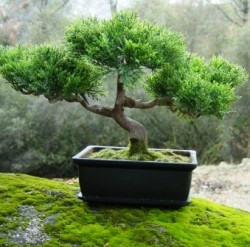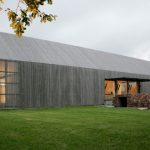
Bonsai Trees can bring a sense of harmony with nature into your home.
Bonsai trees have been cultivated as an art form by Japanese and Chinese gardeners for centuries. The aim of the bonsai gardener is to create an impression of serenity and space in miniature form, so that even if they live in a small apartment or a busy urban area, they can bring a sense of harmony with nature into the home.
Bonsai, although it has changed with the times, remains steeped in tradition. Stylistic preferences come and go, but a basic set of customs and formal classifications have emerged over time. These include formal characteristics such as overall height and the line of angle of the trunk.
The line of the trunk may be straight and upright if the tree is grown in the chokkan (formal upright) style, may include a slight slant or a curve if the tree is grown in the moyogi (informal upright) style, or may be very slanted, for the shakan (slanting) style. It may grow up and then bend over again for the han-kengai (semi-cascade) style, or cascade dramatically downwards for the kengai style.
Perspective and asymmetrical balance are also prized in bonsai designs. Typically, bonsai trees are planted in odd numbers, with different heights, and trunks should taper from bottom to top to create a sense of height.
The actual height of the tree is also important in categorizing bonsai trees for sale, and may range from under six inches for ‘miniature’ trees, to over 24 inches for ‘large’ trees, with ‘small’ and ‘medium’ in between.
The color of a bonsai tree’s bark and leaves will vary from species to species, and any pots and landscaping accessories should harmonize with these, as well as the color of blossoms if it is a flowering bonsai tree.
Textured bark may also be prized in a bonsai tree, for the opportunities to create an impression of weathering, age and maturity.
The skilled bonsai gardener’s art is to unify these visual elements to produce a living tree that is also an art form, creating a harmonious, natural effect.
















